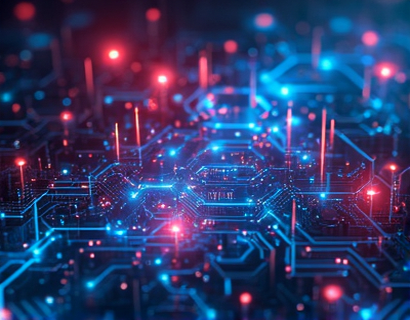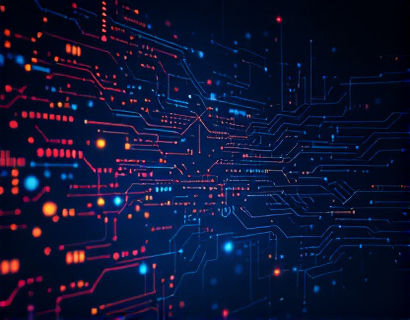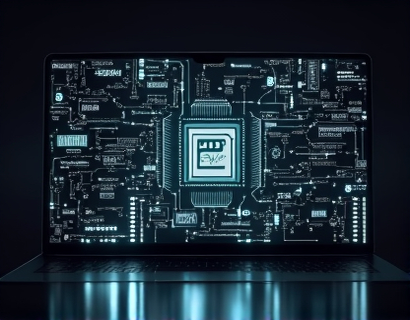Seamless DeFi Management: Embracing the Next-Gen Web3 Wallet for Crypto and Token Mastery
In the rapidly evolving landscape of decentralized finance, or DeFi, the need for a robust and user-friendly digital asset management solution has never been more critical. The advent of Web3 technologies has ushered in a new era where users can interact directly with blockchain networks, offering unprecedented levels of security, transparency, and control. At the heart of this revolution is the Web3 wallet, an advanced online platform designed to streamline the access, storage, and transactions of cryptocurrencies and tokens. This article delves into the features and benefits of the next-generation Web3 wallet, highlighting how it empowers crypto enthusiasts and DeFi users to achieve mastery over their digital assets with ease and efficiency.
Understanding Web3 Wallets
Before exploring the specifics of a next-gen Web3 wallet, it's essential to grasp the fundamental concepts of Web3 and digital wallets. Web3 refers to the third generation of the internet, characterized by decentralization, user ownership, and the use of blockchain technology. Unlike traditional web2 models, where data is stored on centralized servers, Web3 allows users to own and control their data through decentralized applications (dApps) and blockchain networks.
A Web3 wallet, therefore, is a digital wallet that operates on the Web3 ecosystem, enabling users to manage their cryptocurrencies and tokens across various blockchain platforms. Unlike traditional wallets that rely on centralized exchanges or third-party services, Web3 wallets provide a secure and private way to store and transact digital assets directly from the blockchain. This not only enhances security but also gives users full control over their funds, eliminating the risks associated with centralized storage.
Key Features of a Next-Gen Web3 Wallet
The next-generation Web3 wallet is designed with a suite of advanced features to ensure a seamless and secure user experience. One of the primary features is multi-chain compatibility. In a decentralized finance environment, assets can exist across multiple blockchain networks, each with its own protocols and standards. A next-gen Web3 wallet must support a wide range of blockchains, including Ethereum, Binance Smart Chain, Solana, and others, allowing users to manage their assets across different ecosystems without the need for multiple wallets.
Another critical feature is cross-asset management. Users often hold a diverse portfolio of cryptocurrencies and tokens, each serving different purposes and offering unique benefits. A sophisticated Web3 wallet should enable users to manage all their assets in one place, providing a unified interface for monitoring balances, tracking transactions, and executing trades. This not only simplifies asset management but also enhances the overall user experience by reducing the complexity associated with handling multiple wallets.
Security and Privacy
Security is paramount in the world of digital assets, and a next-gen Web3 wallet must prioritize this aspect above all else. Advanced encryption techniques, such as hardware-based security modules and multi-signature transactions, ensure that user funds are protected from unauthorized access and cyber threats. Additionally, the wallet should offer features like passwordless login, biometric authentication, and secure key management to further bolster security.
Privacy is another crucial concern for many users. A reputable Web3 wallet should provide options for anonymous transactions and the use of privacy-focused cryptocurrencies. This is achieved through the integration of zero-knowledge proofs and other privacy-enhancing technologies that allow users to transact without revealing sensitive information. By prioritizing both security and privacy, the wallet builds trust and confidence among users, encouraging broader adoption of decentralized finance solutions.
User Interface and Experience
A seamless user interface is essential for the widespread adoption of Web3 wallets, especially among crypto enthusiasts and DeFi users who value efficiency and ease of use. The next-gen Web3 wallet should feature an intuitive and user-friendly design that simplifies complex blockchain interactions. This includes a clean and organized dashboard, clear navigation, and straightforward transaction processes.
To cater to users with varying levels of technical expertise, the wallet should offer both basic and advanced modes. The basic mode provides a simplified experience for newcomers, guiding them through common tasks such as setting up a wallet, adding assets, and executing simple transactions. The advanced mode, on the other hand, offers more granular control and customization options for experienced users who require more sophisticated functionalities.
Interoperability and Integration
Interoperability is a key differentiator for a next-gen Web3 wallet. In a decentralized ecosystem, the ability to interact seamlessly with various dApps, exchanges, and other blockchain services is crucial. The wallet should support a wide range of protocols and standards, such as ERC-20, ERC-721, and Polkadot interoperability protocols, ensuring compatibility with a broad spectrum of decentralized applications.
Integration with popular DeFi platforms and services is also essential. This includes support for decentralized exchanges (DEXs), lending and borrowing protocols, yield farming opportunities, and non-fungible token (NFT) marketplaces. By integrating these services, the wallet provides a comprehensive solution for users to engage in various DeFi activities, from staking and lending to trading and collecting NFTs.
Offline Capabilities and Recovery Mechanisms
While online access is convenient, the ability to manage assets offline is a valuable feature for users who prioritize security. A next-gen Web3 wallet should offer offline capabilities, allowing users to back up their private keys and seed phrases for use in offline environments. This ensures that users can access their assets even in the event of internet outages or cyber attacks.
Robust recovery mechanisms are equally important. The wallet should provide multiple recovery options, such as recovery phrases, email-based recovery, and hardware seed backups. These mechanisms ensure that users can regain access to their assets in case they lose their primary access methods, providing peace of mind and reducing the risk of permanent loss.
Community and Support
A strong community and reliable support system are vital components of a successful Web3 wallet. An active community can provide valuable insights, feedback, and collaborative development, helping to improve the wallet's features and address user concerns. The wallet's developers should maintain an open and transparent communication channel, regularly updating users on new developments and addressing issues promptly.
Comprehensive support resources, including detailed documentation, FAQs, and user guides, are essential for helping users navigate the wallet's features and resolve any issues they may encounter. Additionally, a responsive customer support team can offer assistance through various channels, such as live chat, email, and social media, ensuring that users have the help they need when they need it.
Conclusion
The next-gen Web3 wallet represents a significant leap forward in digital asset management, offering a secure, intuitive, and comprehensive solution for crypto enthusiasts and DeFi users. By embracing the principles of decentralization, security, and user empowerment, these advanced online platforms are set to redefine the way we interact with blockchain networks and manage our digital assets. As the DeFi landscape continues to evolve, the importance of a reliable and feature-rich Web3 wallet cannot be overstated, making it an indispensable tool for anyone looking to master their digital wealth in the decentralized world.










































